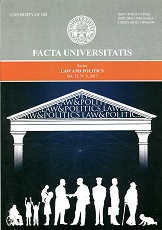The Elements of Proportionality as a Principle of Human Rights Limitations
The Elements of Proportionality as a Principle of Human Rights Limitations
Author(s): Luka AnđelkovićSubject(s): Human Rights and Humanitarian Law, Philosophy of Law
Published by: Универзитет у Нишу
Keywords: proportionality; human rights; limitations; ECtHR
Summary/Abstract: The article discusses the elements of proportionality as the most important requirement that must be satisfied in the limitation of human rights. There are four major elements of this principle: legitimacy, adequacy, necessity, and proportionality stricto sensu. Legitimacy means that limitation must pursue a legitimate aim. Adequacy means that the chosen measure must be suitable for achieving that aim. Furthermore, the government may only use the least restrictive measure for achieving the aim, the one that causes least damage to protected rights and interests. In order to be deemed proportionate, the limitation must satisfy the test of proportionality stricto sensu, which means that achieving a particular aim must be important enough to justify the damage which will be caused to individual rights. This article particularly focuses on the application and the significance of these elements in the case-law of the European Court of Human Rights and the Constitutional Court of Serbia.
Journal: FACTA UNIVERSITATIS - Law and Politics
- Issue Year: 15/2017
- Issue No: 3
- Page Range: 235-244
- Page Count: 10
- Language: English

